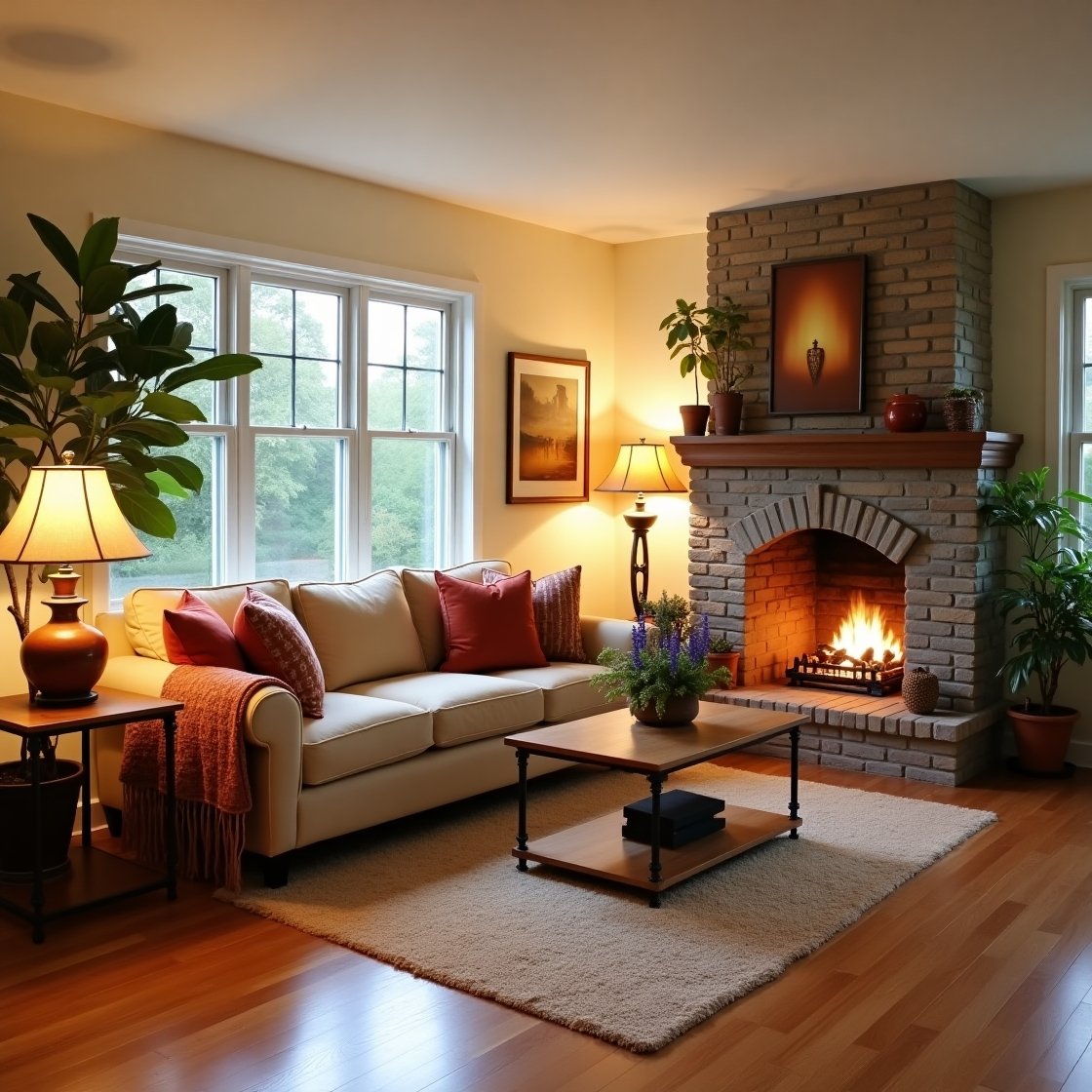The living room is often the heart of a home — the place where we relax, connect, entertain, and unwind. Whether you live in a large house or a small apartment, designing a cozy living room is about more than just choosing a sofa and hanging a few frames. It’s about creating an environment that feels comfortable, lived-in, and emotionally grounding.
In this article, you’ll learn how to transform any living room into a warm, welcoming space using the principles of interior design, smart furniture placement, color and texture layering, lighting strategies, and personal touches.
1. Define What “Cozy” Means to You
Before buying anything, pause and reflect: what does cozy feel like for you?
- For some, it’s soft lighting, plush rugs, and earth tones
- For others, it might be bookshelves, layered blankets, and vintage furniture
- Maybe it’s a minimalist space with clean lines and neutral colors
Understanding your personal version of “cozy” helps guide the choices ahead.
2. Start with the Right Layout
A cozy space begins with good flow and purposeful placement.
Layout tips:
- Arrange seating to encourage conversation (e.g., sofas and chairs facing each other)
- Avoid pushing all furniture to the walls — float your sofa or chairs to define a central zone
- Use a rug to anchor the layout and add softness underfoot
- Add a coffee table or ottoman that invites casual use and comfort
In smaller living rooms, use multifunctional furniture like nesting tables or storage poufs.
3. Choose a Warm and Harmonious Color Palette
Color sets the emotional tone. For a cozy living room, choose:
- Warm neutrals: beige, taupe, caramel, terracotta
- Earthy tones: olive green, rust, clay, mustard
- Deep shades: navy, forest green, burgundy
- Soft pastels: blush, dusty rose, sage (for lighter cozy vibes)
Stick to a palette of 3–4 main colors and use them consistently across furniture, textiles, and accents.
4. Layer Different Textures for Depth and Warmth
Texture is what makes a space feel tactile and lived-in. Combine:
- Soft fabrics: knit blankets, velvet cushions, linen curtains
- Natural materials: jute rugs, wooden tables, woven baskets
- Smooth vs. rough surfaces: combine glossy ceramics with rustic wood
Pro tip: Layer a throw blanket over a chair, use pillows in varied fabrics, and add a fuzzy rug for extra comfort.
5. Prioritize Lighting That Creates Atmosphere
Overhead lighting alone rarely creates a cozy mood. Instead, layer different light sources:
Use:
- Table lamps with warm bulbs (2700K or lower)
- Floor lamps with fabric shades
- Wall sconces or LED strips behind furniture
- Candles (real or battery-operated) for soft glow
Lighting should be warm, diffused, and adjustable. Add dimmers if possible.
6. Incorporate Natural Elements
Bring the outside in with:
- Plants: snake plants, peace lilies, pothos, or ferns in decorative pots
- Wood accents: coffee tables, sideboards, or picture frames
- Stone, clay, or terracotta pieces
- Natural light: use light curtains to maximize daylight
These elements ground the room and create a sense of balance and calm.
7. Use Books, Art, and Objects with Meaning
Avoid overly generic decor. Instead, decorate with items that tell your story:
- Stack books on the coffee table or shelves
- Hang artwork that reflects your style or travels
- Include handmade ceramics, heirlooms, or vintage finds
Personalization = coziness. When your space reflects who you are, it automatically feels more inviting.
8. Make the Sofa the Star (and the Softest Spot)
Your sofa should invite relaxation:
- Choose plush cushions and soft fabrics (like microfiber, velvet, or chenille)
- Use throw pillows in different sizes and textures
- Layer a cozy blanket or quilt across the back
In small spaces, consider a loveseat or sectional to maximize seating and comfort.
9. Add a Fireplace (or Fake One!)
If you have a real fireplace — design around it with cozy chairs and soft lighting.
No fireplace? No problem:
- Use an electric or bioethanol fireplace
- Style a console table with candles and lanterns
- Hang a large mirror or artwork where a fireplace would traditionally go
The visual cue creates a psychological warmth that enhances the room’s cozy vibe.
10. Style with Intent — Not Clutter
While cozy often means “lived-in,” too many objects can feel messy.
Balance your decor:
- Use trays to group small items (candles, coasters, remotes)
- Keep surfaces partially empty for breathing room
- Create visual symmetry with pairs of lamps, chairs, or artworks
Curate intentionally — less clutter, more comfort.
Bonus: Cozy Touches by Season
Winter:
- Add flannel or wool throws, deep jewel tones, and layered lighting
Spring:
- Swap heavy textures for linen, add light greenery or fresh flowers
Summer:
- Use cotton fabrics, lighter rugs, and sheer curtains
Fall:
- Introduce burnt orange or mustard pillows, faux fur, and warm ceramics
Updating your textiles and accessories by season keeps your cozy space feeling fresh all year.
Final Thoughts: Your Living Room, Your Sanctuary
Creating a cozy living room isn’t about following strict design rules — it’s about listening to how you want to feel when you’re home. Whether you lean minimalist, rustic, bohemian, or modern, you can create coziness through thoughtful lighting, meaningful decor, warm textures, and intentional layout.
Let your living room reflect your rhythm. Design a space that invites conversation, rest, and connection — and that welcomes you home every single day.
